A small population of the endangered Northern Quoll has resurfaced for the first time in 11 years at Spider Gorge on Kija Country at Australian Wildlife Conservancy’s (AWC) Mornington Wildlife Sanctuary. The chance encounter was made through a camera trap that was set up as a demonstration for visiting philanthropists.
Populations of Northern Quolls have undergone significant population declines across northern Australia due to the invasion of toxic cane toads, which arrived in the eastern Kimberley in 2006. Since their arrival on Mornington Wildlife Sanctuary in 2016 and Charnley River – Artesian Range Sanctuary in 2019, AWC’s Northern Quoll surveys have recorded declines in total number of quolls and number of sites where quolls are detected. Particularly on Mornington, Northern Quolls appeared to have been close to gone or undetectable.
That was, until a chance encounter with the species on Mornington’s remote eastern gorge habitats.
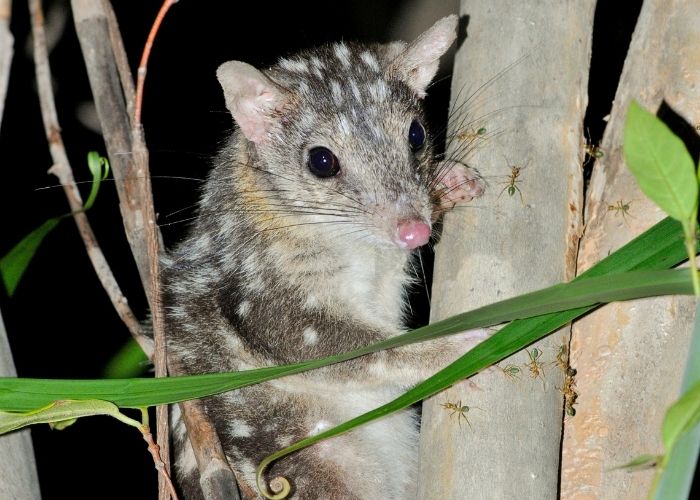 Wayne Lawler/AWC
Wayne Lawler/AWC
Hours before visitors were due to arrive at the sanctuary late 2021, Annie Leitch, AWC Senior Interpretations Guide, and Steve Brown, Chopper Pilot, selected the impressive Spider Gorge as the main destination feature of the philanthropists’ tour. They agreed that the Gorge, located in the south eastern section of Mornington, was the perfect spot to showcase conservation programs and the iconic northern Kimberley landscape. The site was inaccessible except by helicopter and a special treat for their guests, close to an area that was surveyed earlier in the year, detecting no quolls.
While gathered around the swimming hole of Spider Gorge, ecologists deployed a camera trap to demonstrate its function and the important role these devices play in assisting scientists to monitor wildlife. The camera was switched on and left in place until it could be collected by Annie 39 days later.
Upon collection, Annie decided to flick through the camera trap images. She wasn’t expecting to find anything beyond the reptiles and Kimberley Rock-rats that often turn up in images, until she caught glimpse of something unexpected.
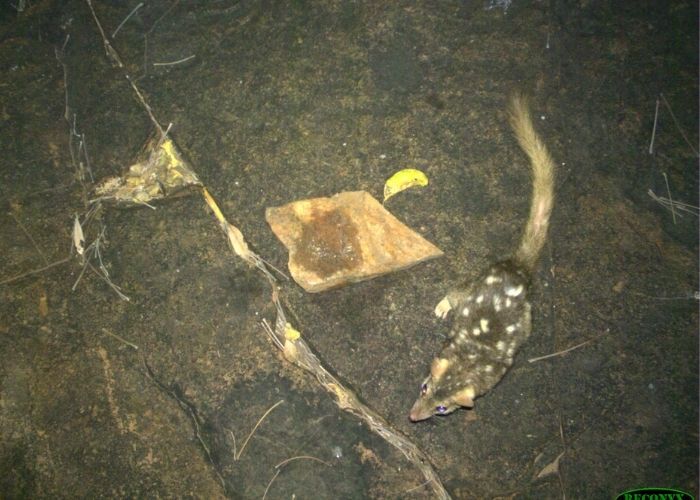 AWC
AWC
“We needed the camera for a new deployment, so I didn’t have much time to go through the images,” Annie explained. “I was quickly scanning through them, seeing Kimberley Rock-rats and Ningbing False Antechinus… just the usual small mammals in this type of rocky environment. And then out of the corner of my eye, I noticed spots in one of the pictures.”
“The camera captured four clear images of a Northern Quoll from a population in Spider Gorge that we haven’t detected in over a decade. We were under the impression that they may have disappeared from the area and were thrilled to see the individuals, particularly because we have only detected a three individual Northern Quolls across Mornington in the past two years.”
Excited by the discovery, Mornington’s ecologists set out to investigate the population a little further. This time, they set up live traps and 20 camera traps. Although the team didn’t get any live captures, they did get a few more images detecting quolls, indicating at least three individuals live in the gorge.
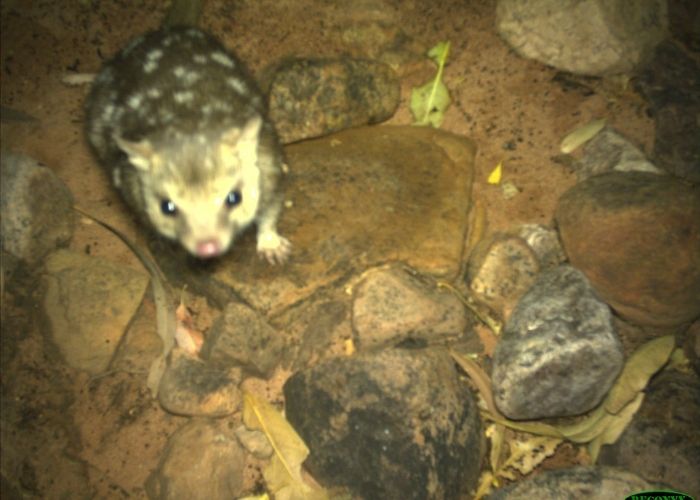 AWC
AWC
“Based on the new images captured on camera arrays placed in the same vicinity, we were able to confirm a minimum of three individuals in the population,” explained Dr Skye Cameron, Australian Wildlife Conservancy Regional Ecologist. “Their presence is a great way to demonstrate that these rocky habitats may still support small numbers of these species.”
Dr Cameron continued, saying that although there are no immediate plans to continue monitoring the newly found individuals, their detection and their persistence does warrant a re-evaluation of where surveying takes place in the future and if a reintroduction to aid the persistence of this species in the region is feasible.
“Currently, we are closely monitoring populations of Northern Quolls at Charnley River-Artesian Range Wildlife Sanctuary as part of a larger research program,” said Dr Cameron. “They indicate functional populations and will be monitored into the future with key conservation targets identified. We will look at the feasibility and success of potential intervention to ensure the persistence of this endangered species on AWC sanctuaries in the Central Kimberley.”
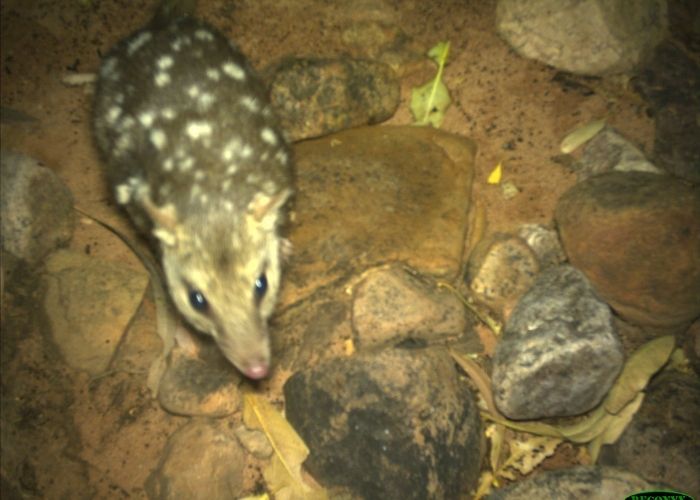 AWC
AWC
The Northern Quoll is a carnivorous marsupial and Australian’s smallest quoll, weighing between 240–1,120 grams and measuring 249–370 mm. Historically, they were found across northern Australia occurring from the Pilbara, Western Australia to Brisbane, Queensland. Their range contracted between 1900-1990 due to loss of habitat and predation by feral cats. Since 1935, with the introduction of cane toads, Northern Quolls have rapidly declined as the toxic toad invades west across the continent, sometimes to the point of local extinction. Due to this decline the species is now listed as endangered under the International Union for Conservation of Nature.
Northern Quolls are described as having red and brown fur with a cream underside and white spots on their backs. They have a black tail and a pointed snout. They have a short lifespan with most males only living for one year, dying soon after a synchronized breeding event and low survivorship of females to second and third breeding seasons making populations vulnerable to extinction from high-impact threats.
AWC and our Partners protect Northern Quolls and their habitat in northern Australia – on Djungan and Western Yalanji country at Brooklyn Wildlife Sanctuary in Queensland, on Kija Country at Mornington and Wilnggin Country at Charnley River-Artesian Range Wildlife Sanctuary, in the Kimberley Western Australia. Northern Quolls are also detected across AWC’s Kimberley Partnership Areas, on Dambimangari (including Yampi Sound Training Area) and Wilinggin Country.
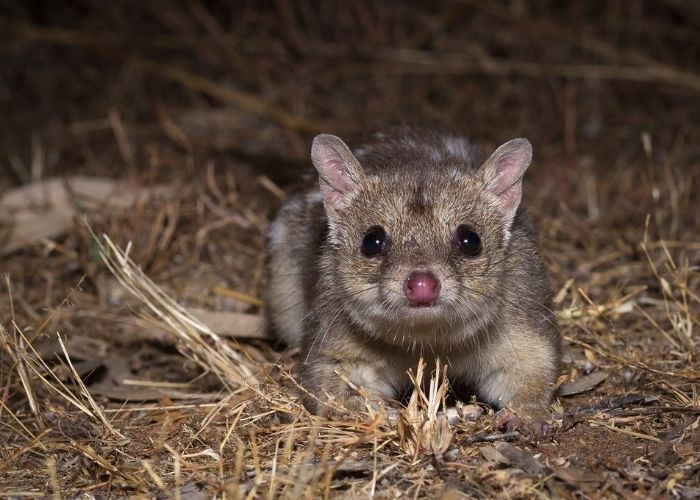 Wayne Lawler/AWC
Wayne Lawler/AWC
AWC is currently carrying out a Northern Quoll research project in the Central Kimberley to determine where this endangered species is persisting and if management intervention may be required. This research project will inform what options and strategies are available (using genetics, distribution and climate change modelling) for the conservation of Northern Quolls in the region.
Support Australian Wildlife Conservancy's science-led conservation work and safeguard the future of Australia's native species
Donate Now